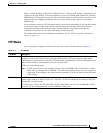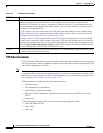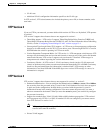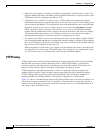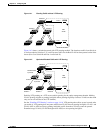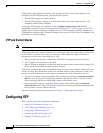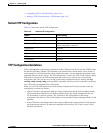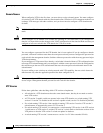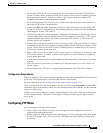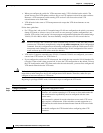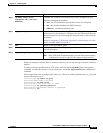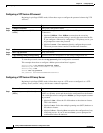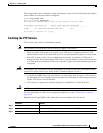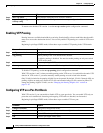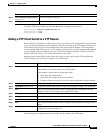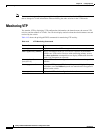
14-11
Catalyst 2960 and 2960-S Switch Software Configuration Guide
OL-8603-09
Chapter 14 Configuring VTP
Configuring VTP
• Do not enable VTP version 2 on a switch unless all of the switches in the same VTP domain are
version-2-capable. When you enable version 2 on a switch, all of the version-2-capable switches in
the domain enable version 2. If there is a version 1-only switch, it does not exchange VTP
information with switches that have version 2 enabled.
• We recommend placing VTP version 1 and 2 switches at the edge of the network because they do
not forward VTP version 3 advertisements.
• If there are TrBRF and TrCRF Token Ring networks in your environment, you must enable VTP
version 2 or version 3 for Token Ring VLAN switching to function properly. To run Token Ring and
Token Ring-Net, disable VTP version 2.
• VTP version 1 and version 2 do not propagate configuration information for extended range VLANs
(VLANs 1006 to 4094). You must configure these VLANs manually on each device. VTP version 3
supports extended-range VLANs. You cannot convert from VTP version 3 to VTP version 2 if
extended VLANs are configured.
• When a VTP version 3 device trunk port receives messages from a VTP version 2 device, it sends a
scaled-down version of the VLAN database on that particular trunk in VTP version 2 format. A VTP
version 3 device does not send VTP version 2-formatted packets on a trunk unless it first receives
VTP version 2 packets on that trunk port.
• When a VTP version 3 device detects a VTP version 2 device on a trunk port, it continues to send
VTP version 3 packets, in addition to VTP version 2 packets, to allow both kinds of neighbors to
coexist on the same trunk.
• A VTP version 3 device does not accept configuration information from a VTP version 2 or version
1 device.
• Two VTP version 3 regions can only communicate in transparent mode over a VTP version 1 or
version 2 region.
• Devices that are only VTP version 1 capable cannot interoperate with VTP version 3 devices.
Configuration Requirements
When you configure VTP, you must configure a trunk port on the switch stack so that the switch can send
and receive VTP advertisements to and from other switches in the domain.
For more information, see the “Configuring VLAN Trunks” section on page 13-13.
If you are configuring VTP on a cluster member switch to a VLAN, use the rcommand privileged EXEC
command to log in to the member switch. For more information about the command, see the command
reference for this release.
In VTP versions 1 and 2, when you configure extended-range VLANs on the switch, the switch must be
in VTP transparent mode. VTP version 3 also supports creating extended-range VLANs in client or
server mode.
Configuring VTP Mode
You can configure VTP mode as one of these:
• When a switch is in VTP server mode, you can change the VLAN configuration and have it
propagated throughout the network.
• When a switch is in VTP client mode, you cannot change its VLAN configuration. The client switch
receives VTP updates from a VTP server in the VTP domain and then modifies its configuration
accordingly.



